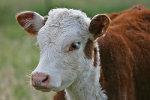
With a drastically increasing human population, it is no wonder that the amount of food we consume is increasing too but, it tends to be in the more developed countries around the world that the consumption of meat is on the rise, the majority of which comes from commercial farms across the globe.
A recent report released by the Worldwatch Institute has revealed that global meat consumption has risen by 20% in the last decade, and with the growing prosperity in developing countries and their populations, this is a figure which is only likely to rise further in the future (which leads to more and more factory farmed meat appearing on the markets).
The average person living in more developed countries is thought to consume nearly three times as much meat every year, compared to someone living in a less developed region of the world, which is also devastating for the surrounding environment. Commercial farms not only consume masses amounts of resources but the waste products emitted by them severely pollute the world around us.
Due to the fact that many of the animals in these farms are treated with antibiotics (around 80% of the total antibiotics produced in the USA go to livestock), their waste is therefore toxic and cannot be used as a natural fertiliser. Here are a few more interesting points raised by the report:

Pork is the meat most eaten around the world followed by poultry, beef and mutton.
Poultry production is the fastest growing industry in the meat-sector and increased by nearly 5% in 2010 to 98 million tonnes.
Around 70% of rural people in developing countries rely on the rearing of livestock (using traditional methods) to provide them with financial security.
Livestock accounts for around 18% of our total greenhouse gas emissions and uses 23% of the water used globally in agriculture.
An estimated 11% of deaths in men and 16% in women could be prevented with a much lower consumption of red meat.
So the trick is to try and source meat that is reared more sustainably (local and organic meats are always the best choice), along with trying not to consume as much meat as usual. With the global population set to explode by 2050, it is up to the consumers particularly in more developed countries to reduce their intake of commercially farmed meats in particular.
To read the full report, please visit the Worldwatch Institute Website.
 With a drastically increasing human population, it is no wonder that the amount of food we consume is increasing too but, it tends to be in the more developed countries around the world that the consumption of meat is on the rise, the majority of which comes from commercial farms across the globe.
With a drastically increasing human population, it is no wonder that the amount of food we consume is increasing too but, it tends to be in the more developed countries around the world that the consumption of meat is on the rise, the majority of which comes from commercial farms across the globe.


